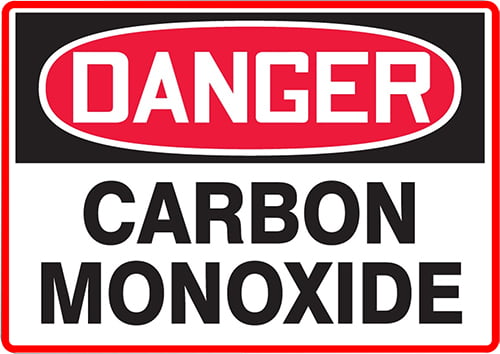
Written by Chris on March 22, 2023
Updated on: 19 July 2023
Carbon Monoxide – The Silent Killer

Why is Carbon Monoxide Dangerous to the Human Body?
When a human being inhales this colorless and odorless gas, it hijacks critical oxygen molecules contained in the bloodstream’s haemoglobin, which in turn deprives the heart and brain of the vital oxygen it needs and without which serious damage, and even death, can occur. Even a small amount of the gas entering the home is enough to
It’s a sad fact that far too many people are not only unaware that carbon monoxide (CO) is highly toxic to anyone exposed to it.
The gas is produced because of the incomplete combustion of solid, liquid, and gaseous fuels. Incomplete combustion generally occurs when there is an insufficient air and fuel mixture during an engine’s operation. And the engines used in portable generators can produce a lot of CO. When operated in enclosed spaces they can quickly build up lethal levels of the gas, capable of causing serious tissue damage and even killing those in its vicinity – often without anyone realizing what’s happening, and before it’s too late to react.
Know the Risks Posed by Carbon Monoxide
It can’t be stressed enough how much you are at risk if exposed to CO, even for a short time. Because you can’t smell or see it, the gas has earned the nickname of the “silent killer”.
Exposure to CO affects everyone, and each year thousands of people in the US are treated for CO poisoning. The people most at risk include unborn babies, infants, and those with anaemia or heart problems. And the danger is even greater because many people are unaware they have CO poisoning. Thinking it’s the flu they don’t get the right treatment.
Know the Symptoms of Carbon Monoxide Poisoning
Symptoms may feel to be flu-like. But CO is busy preventing your body from getting the vital oxygen it needs. Left untreated, the outcome can be deadly.
So be very alert for headaches, dizziness, nausea, weakness, shortness of breath, chest tightness, and loss of muscle control. You should also look out for blurred vision, sleepiness, heart palpitations, redness of the skin, or a sense of general confusion.
Eventually, continued exposure even over a short time can knock you out due to suffocation, leading to brain damage and even death.
Using your Generator
In all our reviews we repeat the vital need never, ever, to operate your generator in an enclosed space where people may be present. The advice is to place the generator at least 20 feet from your home to avoid gases being blown in through windows or doors. And it should be at least 5 feet away from any combustible material such as trees and bushes. Even so, installing one or preferably more CO detectors in the home is one of the best safety measures you can take.
If you do decide to put your generator in an enclosure to reduce noise, then make sure it is placed outside and has adequate ventilation.
This website provides further information on this important subject and the Department of Labor’s Occupational Safety and Health Administration (OSHA) have this useful factsheet.
If in any doubt whatsoever, ask a professional for advice.
